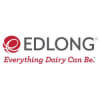NEW YORK — Chobani built itself into one of the nation's largest yogurt producers by amassing a market-leading position in the Greek category.
Peter McGuinness, president of the New York dairy manufacturer, said despite its dominance, the company has become anything but complacent.
"We're restless. I don't think we're ever really totally satisfied and happy," McGuinness told Food Dive from his office in New York City. "That kind of keeps us on the edge of where we need to be."
In the last year, Chobani has paired its low-fat Greek yogurt with nut butters to create a nutrient-intense and energy-rich snack. It introduced Non-Dairy Chobani, the company's coconut-based offering in the dairy alternative space, earlier this year. And last December, Chobani introduced a new line of kids' yogurt products, called Chobani Gimmies. The company also has been trying to keep up with consumer trends in other ways, introducing its Chobani Less Sugar Greek Yogurt line in 2017.
“Not to be cheeky, but what the heck, so goes Chobani, so goes the category ... . When we grow, the category tends to grow.”

Peter McGuinness
President, Chobani
The innovations appear to be paying off. In the U.S., Chobani was responsible for 20% of all yogurt sales in the four weeks ended September 21, up from 18.1% in the same period a year earlier, according to Nielsen data provided by the food company. Without Chobani’s 10% increase in sales growth during that period, the category would be down nearly 2.5% instead of flat.
“Not to be cheeky, but what the heck, so goes Chobani, so goes the category ...," McGuinness said. "When we grow, the category tends to grow.”
Still, yogurt sales as a whole have been on the downswing, especially in traditional and Greek styles. Sales in each segment have fallen roughly $400 million since 2015 to about $3 billion annually, according to data provided by Nielsen. The bright spots in yogurt are Icelandic and nondairy varieties, which have posted a compound annual growth rate of 51% and 44% respectively during the last four years. But despite their strong growth, Icelandic only commands 2.4% of total yogurt sales while plant-based varieties control 2.7%, making it difficult for them to offset the declines in other areas.
McGuinness said the cavalcade of new products from Chobani during the last 12 months has been in the works for years, but the New York yogurt maker first had to lay the groundwork. It spent money to upgrade its production facilities, order new equipment, expand its distribution network and hire new employees. It doubled the number of research and development people. Behind the scenes, Chobani had been working on these products for a few years so it could roll them out once these upgrades were complete.
Chobani's new offerings are not cannibalizing products it already has on the market, McGuinness said. In September, Chobani shipped the largest amount of yogurt, in terms of orders and shipments, in company history.
"The brand is extremely strong and relevant and healthy," he said.
As proof, he said, the new innovations are resonating with consumers. Shoppers also are gravitating to multi-packs or large containers rather than buying one or two yogurt cups at a time. When retailers reassess which products to carry and the shelf space to give them, Chobani has gotten more each of the last three times, McGuinness said.
Chobani has long established it wants to move beyond yogurt and transform the business into a "modern food company" that produces more nutritious and affordable products for more consumers. While McGuinness declined to speculate where the company might venture next — an announcement is expected before the end of the year — he said the brand has a lot of room to stretch.
"As we sit here, we're on the eve of that happening," he said. "We've been preparing for this moment for a while."
Still, McGuinness was adamant Chobani hasn't given up on what has become synonymous with the company: yogurt. Sales for the creamy snack in the U.S. were $7.2 billion during the 52 weeks ending August 24, according to Nielsen, down from $7.6 billion during the same period in 2015. Despite the recent decline, Chobani sees room to grow the segment to more than $10 billion in the U.S. by focusing on different need states such as plant based, high fiber and functional foods like probiotics.
"The one thing we will never do is move on and forget about yogurt," he said. "There are a lot of interesting trends in the yogurt space and there are a lot of unmet needs."
The work to fulfill these needs continues even as the yogurt space itself is loaded with products. The average U.S. grocery store has 306 different yogurt varieties, according to brand sales and marketing agency Acosta, an increase of 4% since 2015. Chobani pegs that total closer to 425, and McGuinness estimated that roughly 75% of them don't sell.
In addition to reducing the number of offerings available, he said yogurt makers need to do a better job organizing the benefits of their yogurt on the shelf by function, while publicly touting those attributes to consumers.
“It’s kind of drunk and disorderly out there and it needs to be simplified," he said. "You go and there’s a sea of yogurt, you don’t know what’s what. ...The yogurt shelf is the ugliest shelf in the store.”























